Animals That Could Reshape Earth's Waterways
Nutrients, water and living space. These are the basic needs of life. Anything that changes their distribution will be a key factor in the struggle for survival. Simply changing waterways, landscapes or food sources can reshape entire ecosystems.
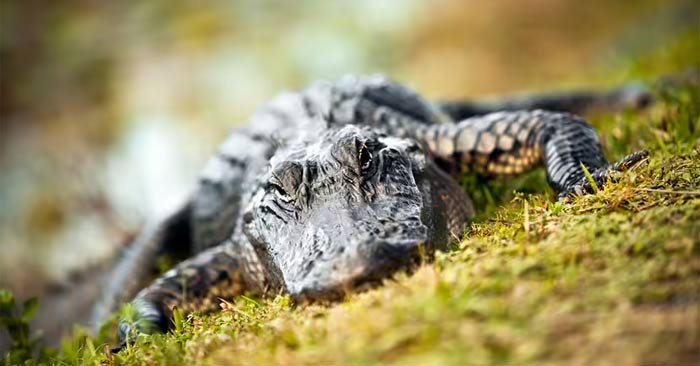
Certain species use that power effectively. One of the most fascinating topics in biology is the role of 'ecosystem engineers.' Scientists define them as ' organisms that directly or indirectly regulate the availability of resources to other species by causing physical changes in biotic or abiotic materials .'
Simply put, ecosystem engineers alter the physical environment around them in ways that have a major impact on the livelihoods of other organisms. A prime example is the American alligator (Alligator mississippiensis).
In the wild, these large reptiles love to create their own swimming pools. Using their snouts and claws, they carve giant trenches known as ' gator holes ' into the limestone surrounding the Florida Everglades. Within moments, these become flooded. The depressions also tend to stay full of water, even during the dry season when standing water is scarce.
For other life forms, these alligator burrows are much-needed 'oasis.' Frogs and turtles flock to these convenient little ponds, while vegetation surrounds the edges, attracting all manner of insects. So, while it may seem hard to believe, Florida alligators are environmental stewards. They create entirely new homes for their neighbors and — in the process — enhance the biodiversity of the Everglades.
Other ecosystem engineers have left their mark in different ways. Here are the creatures that have reshaped rivers, connected lakes, and transformed salt marshes.
Beaver
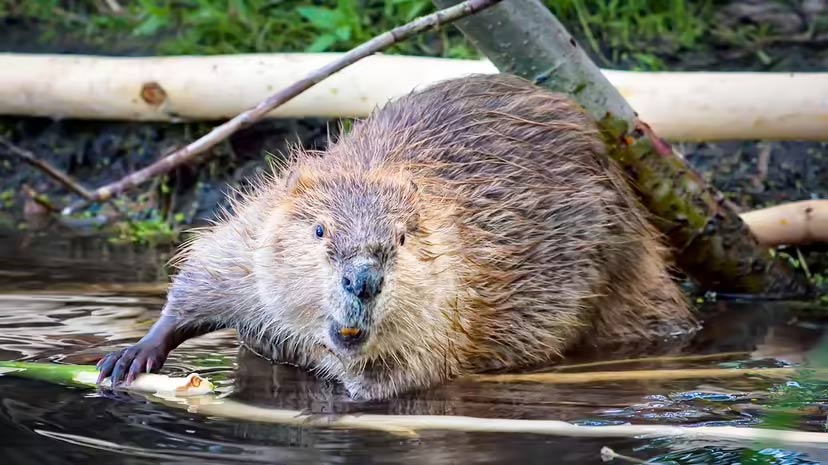
The phrase 'busy as a beaver' is high praise indeed. Beavers are extremely hard-working rodents; a single individual can chop down as many as 200 trees in a single year. They are famous for their ability to build permanent homes—or 'huts'—out of branches, mud, and other materials. They can also create large-scale ponds by damming up streams.
With a well-placed dam, a family of beavers can regulate the flow of water. Upstream of the structure, standing water can create a still pond where there was none before. This not only allows beavers to build shelter, but also gives them easy access to surrounding vegetation. Typically, a layer of water about 5 cm (or 0.6 m) deep will cover the roots of nearby pines and hardwoods that once grew on dry ground. This allows beavers to swim straight to these trees. They also like to dig canals that branch off from new ponds, cutting deep into local forests.
These new wetlands created by beavers provide shelter for smaller animals like amphibians. Additionally, the rodents' dams are excellent natural filters, keeping excess nitrogen out of creeks and streams.
Not all the side effects are positive, however. When beaver dams fail, they can flood towns or farms. The consequences can be costly: In the southeastern United States alone, these floods cause an estimated $22 million in damage to the timber industry each year. So it's no surprise that many people consider beavers pests.
Hippo
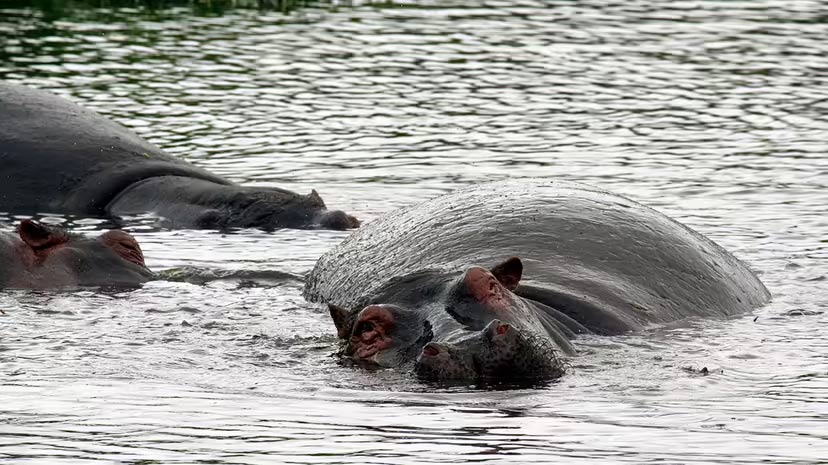
Landscaping is child's play for these hippos. Release a herd of hippos into a floodplain with plenty of soft soil and they will begin actively regenerating the grass. These giant creatures love to plow through the reed beds that surround water bodies. This creates deep depressions in the ground that later become channels. Additionally, on hot days, hippos will sometimes relax in the cool comfort of freshwater pools.
However, these lakes don't provide much food. So when they get hungry, hippos will leave their small lakes to feed elsewhere. All this coming and going creates what Discover magazine once called a " hippo highway ."
Worn into deep, bare ravines by roaming hippos, these passageways can be up to 5 meters wide and—like crocodile holes—are quickly filled with water. Furthermore, hippo highways can also form connecting lakes to major rivers. If the area floods, these connections can become outlets for rising water. They also allow wetlands to expand. And under the right conditions, long, gully-like stretches of water can carry large amounts of sediment from rivers into lagoons or ponds.
In short, just by moving about every day, hippos can flatten and reclaim Africa's waterways.
Muskrat
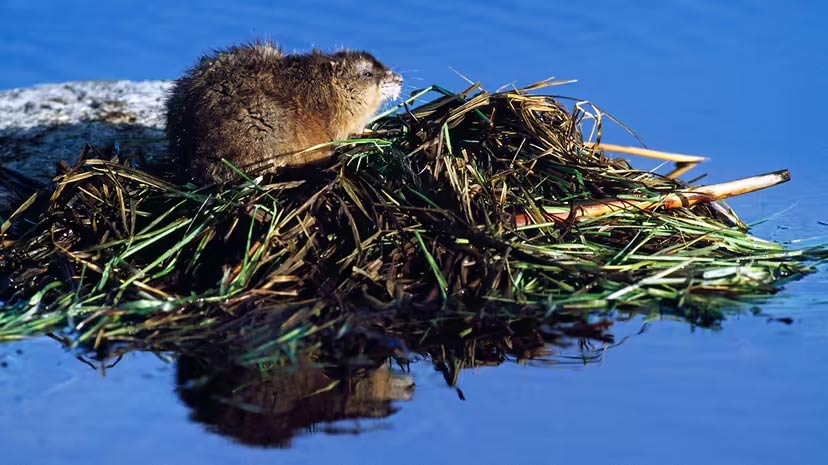
Like beavers, muskrats are known for creating dome-shaped huts from twigs and leaves. But this is not their only method of building shelters. Muskrats living along rivers, ponds, or ditches often avoid huts, opting instead for deep holes they have dug into the shore. They start by diving into the water, where they begin digging a tunnel about 6 to 18 inches below the surface. From there, muskrats dig deeper and tilt upward. Eventually, they create a warm, dry living chamber that is only accessible through underwater entrances. This is a good way to keep unwanted guests out.
Such burrows can have a major impact on the waterways they connect. For one thing, they promote erosion, which can cause riverbanks to collapse. This causes water to flood the affected area, disrupting the river's flow. Over time, if enough water is diverted toward the eroded bank, the river's curvature can change. And what makes land developers particularly upset is that when a muskrat burrows into a man-made dam, sewage often flows with it.
Elephant
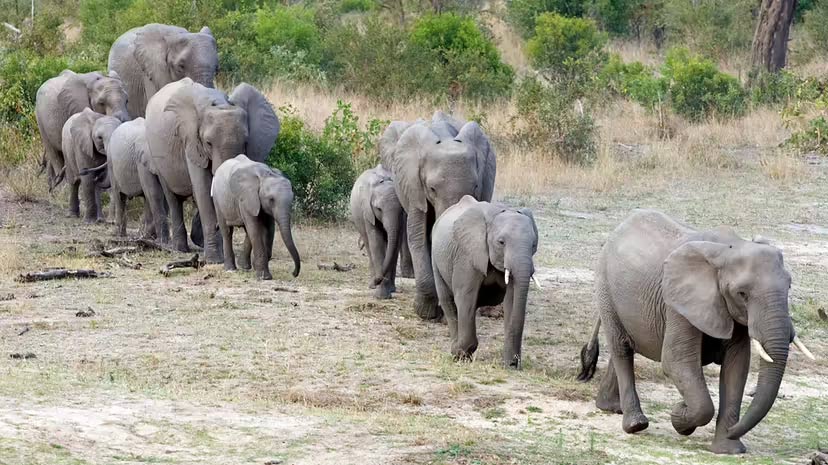
Adult African elephants will spend 12 to 18 hours a day eating, consuming up to 600 pounds of food. Chewing their food is vital to the ecosystem. So is defecation.
Elephant dung is a valuable fertilizer for African soil; it also helps disperse many seeds. Furthermore, by felling trees and eating shrubs, the giant animals turn forests into grasslands.
A 2009 study shed further light on the African elephant's ability to modify its habitat. Published in the journal BioScience, the study reported on ecosystem engineers in Botswana's Okavango Delta. The authors noted that elephants are adept at building water channels. The tusked herbivores like to travel the same trails over and over again, creating trails as they go. Sometimes, multiple generations of elephants will reuse the same trails. Over time, the heavy animals can't help but compact the soil, turning their paths into water channels.
As elephants move back and forth between two bodies of water, their sunken trails become excellent water conduits, so once-isolated rivers or lakes can be joined together through elephant-dug canals, the study authors say.
And that's not the only benefit elephant routes provide. In 2010, environmental scientists Roy Sidle and Alan Ziegler published a seven-year study of an Asian elephant route in northern Thailand. By testing both water levels and sediment, they determined that the route helped channel rainy-season runoff directly into local streams.
Burrowing Crab
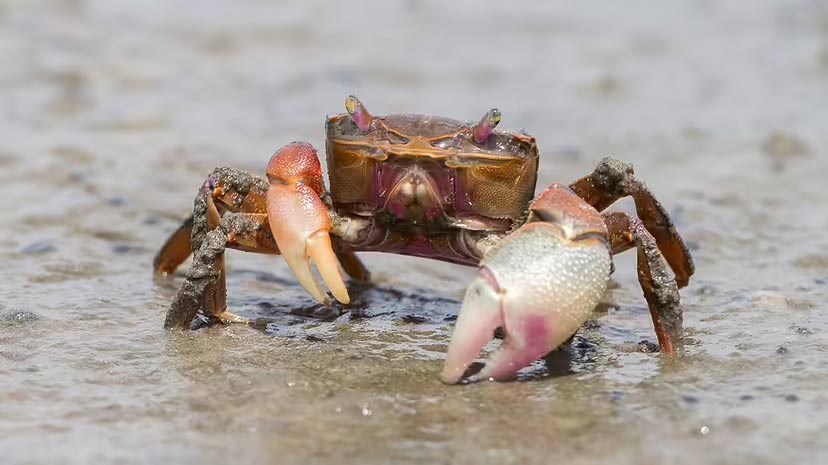
Some crustaceans are expert burrowers, including the fiddler crab (genus Uca), which shelters in tunnels up to 3 feet (0.9 m) deep or more.
And then we have the 'burrowing crabs' of the genus Chasmagnathus. They live in mangrove swamps, salt marshes, and estuaries in East Asia.
Commonly found in the mangrove swamps of Brazil and Argentina, Neohelice granulata is an efficient burrower. Like muskrat burrows, the tunnels these little crabs dig can weaken the surrounding grassy vegetation. On the shores of mangrove swamps, this has the effect of widening tidal channels, making their muddy and clayey banks more vulnerable to erosion by burrowing invertebrates.
Burrowing crabs have a marked impact on sediment composition, so their tunnels can also create entirely new channels within these mangrove systems.
So, despite being quite small animals, burrowing crabs can shake up entire waterway networks.
 New research shows fish are smarter than we thought
New research shows fish are smarter than we thought How dangerous is the toxic substance in the poison ivy that can kill people in a short time?
How dangerous is the toxic substance in the poison ivy that can kill people in a short time? What is the Strait of Hormuz and why is it important?
What is the Strait of Hormuz and why is it important? What is a krait? Why do kraits often crawl into houses?
What is a krait? Why do kraits often crawl into houses? Interesting facts about the great white shark
Interesting facts about the great white shark How does Saharan dust affect Atlantic hurricanes?
How does Saharan dust affect Atlantic hurricanes?